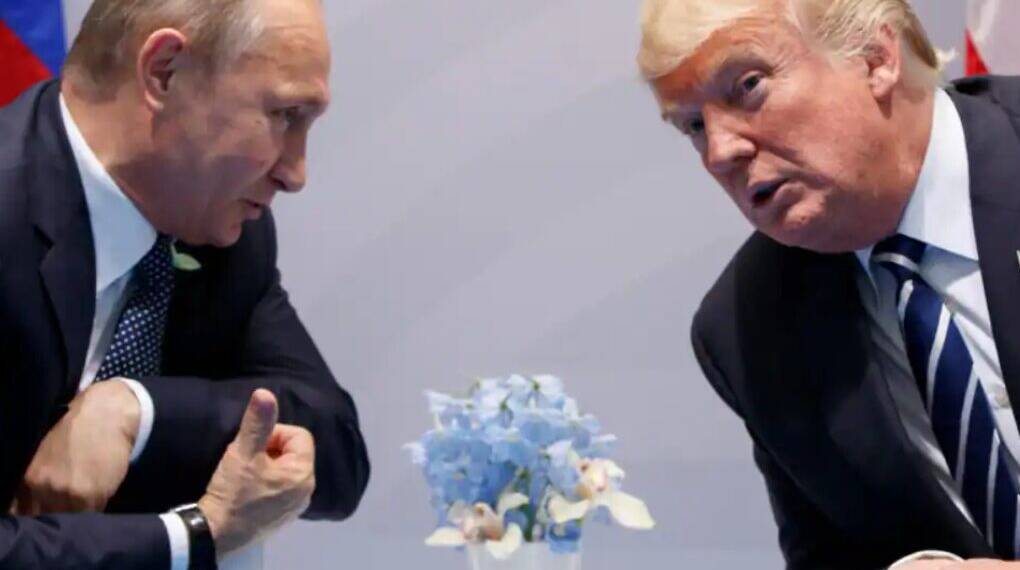With the war in Ukraine entering its fourth year, Russian President Vladimir Putin has confirmed that he will meet U.S. President Donald Trump next week — potentially in the United Arab Emirates — in what could be a watershed moment for the conflict. Both leaders are entering the meeting with drastically different expectations, and the geopolitical stakes couldn’t be higher.
Russia’s Deputy UN Ambassador Dmitry Polyanskiy confirmed the summit, though the exact location and date remain undisclosed. Meanwhile, there is no confirmed role for Ukrainian President Volodymyr Zelenskyy in the talks — a worrying sign for Kyiv as it watches from the sidelines.
The last summit between a U.S. and Russian leader took place in 2021, when then-President Joe Biden met with Putin in Geneva. Since then, the war has taken tens of thousands of lives and redrawn Ukraine’s borders, with Russia now controlling approximately 20% of Ukrainian territory.
What Is Trump Hoping to Achieve?
President Trump is under pressure. After promising to end the Ukraine war within 24 hours of taking office, he’s now seven months into his second term with little to show for it. Trump views the upcoming meeting as an opportunity to secure at least a ceasefire — a move he believes could reassert his self-proclaimed status as a global dealmaker.
However, Trump also faces pushback from within his own administration and Congress, where pro-Ukraine sentiments remain strong. His recent imposition of 25% tariffs on Indian goods — in retaliation for New Delhi’s continued purchase of Russian oil — indicates a willingness to apply pressure globally to isolate Moscow.
But will it be enough?
What Does Putin Want?
Putin enters the summit with a far more rigid agenda. According to Russian officials, any peace agreement must include:
A guarantee that Ukraine will never join NATO,
No Western security commitments to Kyiv,
Recognition of Russia’s control over annexed Ukrainian territories, including Crimea, Donetsk, Luhansk, Zaporizhzhia, and Kherson.
Putin’s foreign policy advisor, Yuri Ushakov, confirmed that a summit location had been agreed “in principle,” and that Putin’s priority was a successful bilateral meeting with Trump — not a trilateral one including Zelenskyy.
Putin himself has previously refused to meet Zelenskyy and continues to insist that Russia is fighting an existential threat posed by NATO expansion.
Zelenskyy’s Growing Isolation
President Zelenskyy has been actively calling European leaders, pushing to be included in the Trump-Putin talks. However, he has received no assurances. His concern is that Trump, who has long shown admiration for Putin and skepticism toward NATO, may accept Russian demands — potentially at Ukraine’s expense.
Trump’s position has indeed shifted. While early in his term he showed willingness to entertain Russian positions on NATO and Ukraine’s territorial concessions, mounting pressure from Western allies and his own officials has complicated his stance. Public fallout between Trump and Zelenskyy over Ukraine’s reluctance to accept territorial compromise has already been widely reported.
Ukraine, short on manpower and economic strength, is losing ground. A recent Gallup poll shows declining public support for continuing the war indefinitely, with many Ukrainians now preferring a settlement — despite the heavy cost.
Will Sanctions Work?
Trump’s use of secondary sanctions — especially those targeting countries like India and China for doing business with Russia — is intended to cripple Russia’s economy and force concessions. But the effectiveness of this strategy remains questionable.
Russia has proven resilient in the face of sweeping Western sanctions, constructing what many experts call a “sanctions-proof” economy. However, long-term restrictions on oil and gas exports — critical to Russia’s budget — could eventually bite.
Still, Putin is unlikely to yield on core demands. For Moscow, NATO’s presence in Ukraine represents a red line, not a bargaining chip.
Where Does This Leave Europe?
European leaders, who have framed the Ukraine war as a fight for the continent’s future, now find themselves trapped.
Europe is grappling with economic stagnation, inflation, and an energy crisis exacerbated by the loss of cheap Russian gas. Germany — the EU’s economic engine — faces deindustrialization. Simultaneously, pressure from the U.S. to reduce ties with China has further strained Europe’s export-driven economy.
Despite these headwinds, Europe cannot easily back down. Abandoning Ukraine could be a fatal blow to the political elites who have invested heavily — politically and financially — in supporting Kyiv. With far-right parties gaining strength across the EU, capitulation to Russia could trigger domestic political upheaval.
The Road Ahead
While the Trump-Putin summit may offer a glimmer of hope, the road to peace remains treacherous. Ukraine is not at the negotiating table, and both Washington and Moscow are miles apart on core issues.
Trump may secure a ceasefire, but any durable peace will require far more — including the resolution of questions about Ukraine’s sovereignty, territorial integrity, and its future within the European security architecture.
The world will be watching closely as these two leaders meet. Whether this is the beginning of the end of the war — or simply another diplomatic detour — remains to be seen.








